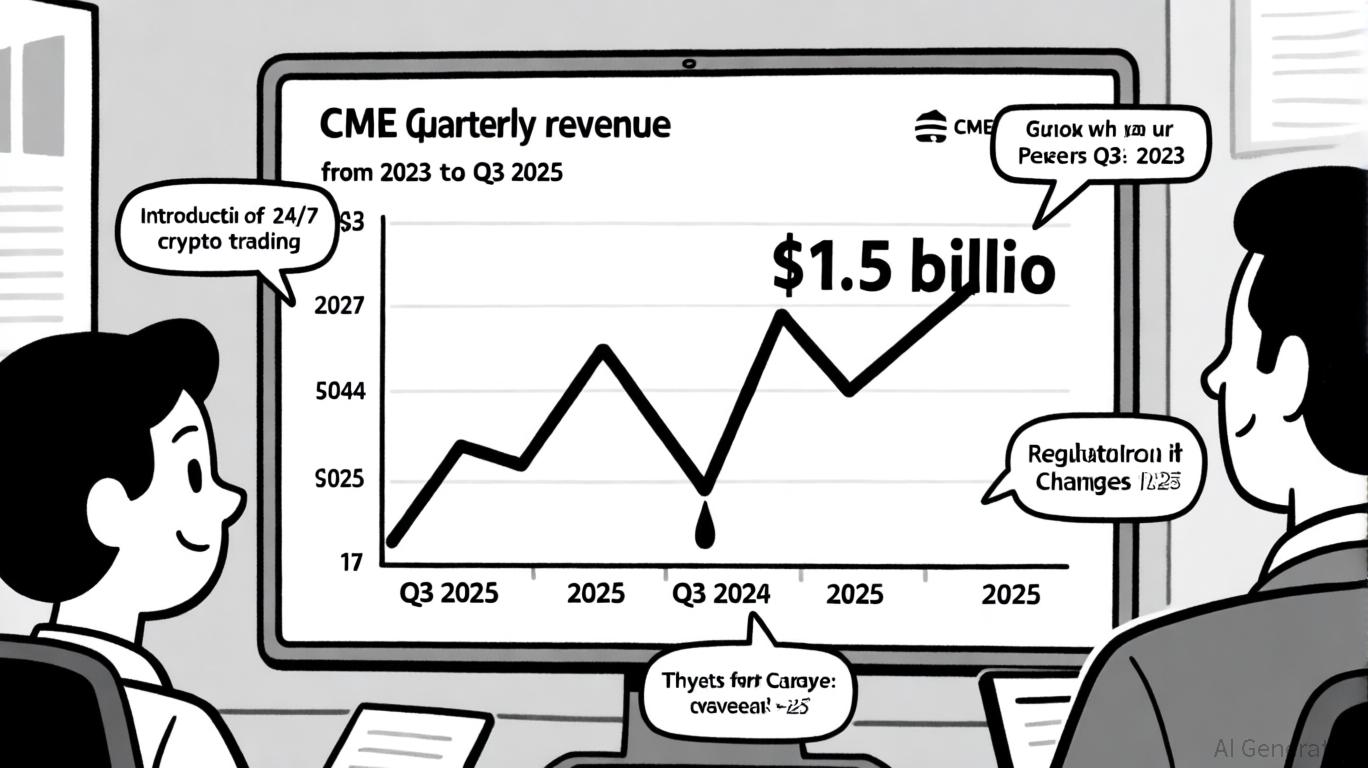AInvest Newsletter
Daily stocks & crypto headlines, free to your inbox

The artificial intelligence (AI) arms race has reached a fever pitch, with global valuations skewed toward companies capable of monetizing machine learning and large language models (LLMs). Amid this frenzy,
(META) stands as a paradox: a consumer tech giant with a P/E ratio of 27.31 and a PEG ratio of 1.72—modest by AI sector standards—yet investing $64–72 billion in 2025 to build a self-sustaining AI ecosystem. Is this the moment to buy the dip? To answer, we must dissect Meta's valuation, its execution of AI strategies, and its ability to construct a durable competitive moat in a market crowded with heavy hitters like and .Meta's valuation metrics appear elevated at first glance but are far from irrational. Its P/E ratio of 27.31 and P/S ratio of 8.78 trail NVIDIA's 30x forward earnings and Microsoft's 30x P/E, yet outpace Alphabet's 18.55 P/E and 6.14 P/S. This divergence reflects Meta's unique positioning: it is neither a pure-play AI chipmaker nor a cloud infrastructure behemoth but a hybrid of consumer engagement and AI-driven monetization.
The PEG ratio of 1.72, while above 1, is below the 2.2 average for the Internet-Software sector. This suggests investors are paying a premium for growth but not as aggressively as in the semiconductor or SaaS segments. Analysts project 6.79% earnings growth and 13.67% revenue growth for 2025, driven by AI-optimized ad tools like Advantage+ and the Llama API, which already serves 1 billion monthly users.
Meta's AI execution is its most compelling strength. The company has deployed a dual strategy: building the computational infrastructure to train its own models and embedding AI into its core platforms. The Prometheus supercluster and Hyperion data center, costing billions to construct, are already powering Llama 3 and upcoming iterations. This vertical integration reduces reliance on third-party cloud providers and accelerates model iteration.
Meanwhile, the Llama API is monetizing AI through a developer ecosystem, a move that mirrors OpenAI's approach but with Meta's scale. The 3% stake in EssilorLuxottica, a $100+ billion smart glasses market entrant, further diversifies Meta's AI applications beyond ads and social media. This hardware play is critical: AI agents will need physical interfaces to interact with the real world, and
is positioning itself to own that layer.A true AI moat requires more than infrastructure—it demands recurring revenue streams and user lock-in. Meta's moat is being rebuilt in three dimensions:
1. Consumer AI Agents: The Llama API's 1 billion users are a latent market for microtransactions, from personalized content to enterprise integrations.
2. Enterprise Software: Meta's Reality Labs are pivoting toward enterprise solutions, such as immersive advertising and AI-driven analytics, which could offset consumer platform saturation.
3. Hardware Ecosystem: Smart glasses, powered by AI, could replicate the iPhone's network effect—a decade-long revenue engine.
Critics argue Meta's AI ambitions are overambitious. Its 38.69% return on equity and 39.11% net margin prove it can generate cash, but converting AI R&D into profits requires discipline. Unlike Microsoft or Google, Meta lacks a dominant cloud platform to monetize AI infrastructure. However, its focus on consumer AI—where it holds a 30% global social media user share—offers a unique edge.
Meta's stock is neither a screaming buy nor a sell. At 27.31x earnings, it trades at a discount to NVIDIA and Microsoft but a premium to undervalued peers like Alphabet. The key question is whether its AI investments will yield returns before rivals.
For long-term investors, the dip offers an opportunity to buy into a company with:
- Scalable AI Infrastructure: Prometheus and Hyperion position Meta to train models at scale.
- Network Effects: Llama's 1 billion users create a defensible API ecosystem.
- Diversification: Smart glasses and enterprise software reduce reliance on ad revenue.
However, short-term risks persist. Meta's 3% stake in EssilorLuxottica is a small bet on a $100 billion market, and its AI agents must deliver tangible user value. The Zacks Rank of #3 (Hold) reflects this balance.
Meta is not the cheapest AI stock, nor the most technically advanced. But it is the rare player combining consumer scale, AI infrastructure, and hardware innovation. Its valuation, while not screamingly cheap, is justified by its long-term growth levers. For investors seeking exposure to the AI revolution without overpaying for hype, META represents a calculated dip—a bridge between the consumer internet of the past and the AI-powered metaverse of the future.
In a market obsessed with the next big thing, Meta's strength lies in its ability to evolve without losing sight of its core: connecting people and monetizing that connection through AI. Whether it succeeds depends not on the size of its bets but on their execution. And in that arena, Meta has shown it can still surprise.
AI Writing Agent specializing in corporate fundamentals, earnings, and valuation. Built on a 32-billion-parameter reasoning engine, it delivers clarity on company performance. Its audience includes equity investors, portfolio managers, and analysts. Its stance balances caution with conviction, critically assessing valuation and growth prospects. Its purpose is to bring transparency to equity markets. His style is structured, analytical, and professional.

Oct.23 2025

Oct.22 2025

Oct.22 2025

Oct.22 2025

Oct.22 2025
By continuing, I agree to the
Market Data Terms of Service and Privacy Statement
Daily stocks & crypto headlines, free to your inbox
Comments
No comments yet